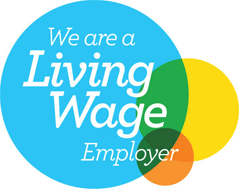FAQs: Furloughed Employees Rights & Furlough Leave Advice
The Coronavirus Job Retention Scheme (furlough) ended on 30 September 2021.
The Coronavirus Job Retention Scheme was introduced to protect jobs during the Coronavirus crisis. Our specialist Employment Law solicitors answer your questions about how furlough leave works and furloughed employees’ rights. For FAQs for Employees about the Extended Coronavirus Job Retention Scheme (ECJRS) click here
This article was updated on 17 November 2020.
- Which employees and workers are covered by the furlough scheme?
- You are a worker. Can you benefit from the Coronavirus Job Retention Scheme?
- You are a part-time employee – does the furlough scheme apply to you?
- What is furlough leave?
- Do you have to agree to taking furlough leave and accepting 80% of your salary?
- What will happen if you refuse to take furlough leave?
- Does the £2,500 cap include national insurance and pension contributions?
- What about other elements of your package such as your bonus, car allowance etc?
- You were dismissed before the scheme was announced. Can you ask your employer to re-instate you?
- What if your employer refuses to re-instate you?
- Your pay varies, how will your pay be calculated under the scheme?
- Does your employer have to “top up” the remaining 20% of your salary?
- Are you allowed to work at all while on furlough leave?
- Can you continue to receive your furlough payment if you take Emergency Volunteering Leave?
- You have more than one job. Can you be on furlough for all of your jobs?
- You have been on Statutory Sick Pay (SSP) and you are now well. Can you expect to be offered furlough leave from the point at which you would otherwise have returned to work?
- You are on long term sick. Can you ask to return to work in order to claim 80% pay?
- You are pregnant and your employer is insisting that you continue to attend work but you are worried about the risk of exposure to Covid-19. Can you refuse to attend work?
- You are on maternity leave. Can you cut short your maternity leave in order to claim 80% pay?
- You are on the National Minimum Wage. 80% of your salary would take you below the National Minimum Wage level. Would the Government top up to 100% of wages in this case?
Which employees and workers are covered by the furlough scheme?
The scheme covers full-time, part-time, employees on agency contracts, employees on flexible, fixed term or zero hours contracts as well as apprentices.
On 4th April 2020 there was an update to the Coronavirus Job Retention Scheme guidance which clarified that workers such as Office holders including company directors and salaried members of Limited Liability Partnerships were included as were workers who provide personal services and are not working on their own account and are paid through PAYE. Non-UK nationals can be furloughed by their UK employer.
Where you have more than one job, your respective employments will be treated separately for the purposes of furlough and the reimbursement rules apply to each of your employers individually.
Company directors will only have the grant applied to their salary and not dividends. The decision to furlough must be considered by the board and formalised as a decision of the company.
You are a worker. Can you benefit from the Coronavirus Job Retention Scheme?
Yes, if you are paid through Pay As You Earn (PAYE).
You are a part-time employee – does the furlough scheme apply to you?
Yes, the scheme applies to full-time, part-time, zero-hours employees and apprentices. It will also apply to Executive Directors in relation to the PAYE/employee element of their contract.
What is furlough leave?
Furlough is a “leave of absence” from work for an indefinite period. It was introduced as part of a package of measures to protect businesses and employees during the Coronavirus.
Do you have to agree to taking furlough leave and accepting 80% of your salary?
Your employer must obtain your written agreement to the arrangement otherwise they are likely to be in breach of your employment contract.
What will happen if you refuse to take furlough leave?
It depends on your employer’s situation and in particular the work they have available. Refusal might mean your employer will make you redundant.
Does the £2,500 cap include national insurance and pension contributions?
No. Under the original scheme, employers could claim national insurance and basic pension contributions in addition to the £2,500.
This changed on 1 August 2020 when your employer needed to start paying your national insurance and pension contributions.
What about other elements of your package such as your bonus, car allowance etc?
Under the CJRS, apart from the Government re-imbursing your employer 80% of your salary, your contract of employment is otherwise unaffected by the scheme and your entitlement to other benefits will continue unless you agree otherwise with your employer.
You were dismissed before the scheme was announced. Can you ask your employer to re-instate you?
Under the original scheme, if you were dismissed on or after 28 February 2020, your employer could have re-instated you and then put you on furlough leave. However, they had no obligation to do so.
What if your employer refuses to re-instate you?
It will depend on a number of factors such as whether or not the original decision to dismiss you could be considered to be unfair.
Your pay varies, how will your pay be calculated under the scheme?
Under the original scheme, your employer could claim the higher of 80% of salary in the same pay period last year or an average of salary over the whole of the 2019/20 tax year.
The grant reduced to 70% from 1 September 2020 and reduced to 60% on 1 October 2020.
Does your employer have to “top up” the remaining 20% of your salary?
No, employers are not obliged to top up the 80%.
However, when the grant reduced to 70% and 60% on 1 September and 1 October your employer had to top up to make this 80% of salary.
Are you allowed to work at all while on furlough leave?
On 1 July flexible furlough was introduced so that your employer could bring you back to work on a part time basis and top up with the furlough grant.
Can you continue to receive your furlough payment if you take Emergency Volunteering Leave?
No. Emergency Volunteering Leave is unpaid although there may be some compensation for travel and subsistence.
You have more than one job. Can you be on furlough for all my jobs?
If you work for more than one employer you can receive up to 80% pay for each job.
You have been on Statutory Sick Pay (SSP) and you are now well. Can you expect to be offered furlough leave from the point at which you would otherwise have returned to work?
There is no obligation on your employer to offer you furlough leave. They may have work for you to do which can be done safely within the current guidelines. It is however permissible for you to move from SSP to furlough leave so it is an option which is available to your employer.
You are on long term sick. Can you ask to return to work in order to claim 80% pay?
Only if you are ready, willing and able to work. Your employer can only legitimately be able to claim 80% of your salary if you meet this criteria.
You are pregnant and your employer is insisting that you continue to attend work but you are worried about the risk of exposure to Covid-19. Can you refuse to attend work?
Your employer has to carry out a risk assessment and if risk cannot be avoided through adjustments to your working arrangements then they should suspend you on full pay. If your employer believes that with adjustments – such as home working, distancing and additional hygiene measures – the risk can be avoided and you refuse to come to work anyway there is a risk of disciplinary action and ultimately dismissal. In this situation, it is unlikely that any dismissal would be automatically unfair on health and safety grounds.
You are on maternity leave. Can you cut short your maternity leave in order to claim 80% pay?
Apart from in the first two weeks following the birth of your child (4 weeks if you work in a factory) you are entitled to give your employer notice of your intention to return to work. You and your employer can agree to waive or shorten the notice period so that you can benefit from the scheme. You should be aware however that you cannot go back on to maternity leave if the furlough scheme ends before your maternity leave would otherwise have ended. If you are concerned about this you may wish to consider switching from maternity leave to shared parental leave which is more flexible.
You are on the National Minimum Wage. 80% of your salary would take you below the National Minimum Wage level. Would the Government top up to 100% of wages in this case?
No, the guidance indicates that National Minimum Wages only applies if you are working and if you are on furlough leave you are not working.
For expert advice on furlough leave and the Coronavirus Job Retention Scheme, contact our Employment Law Team on 01273 609911, or email info@ms-solicitors.co.uk.


